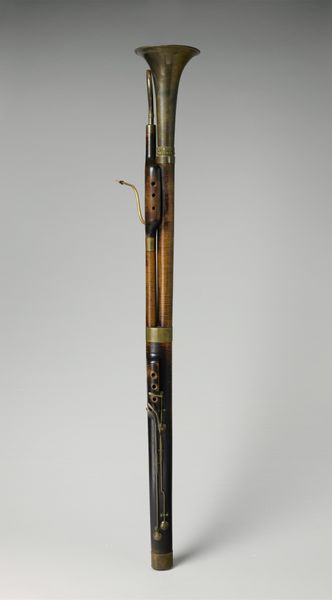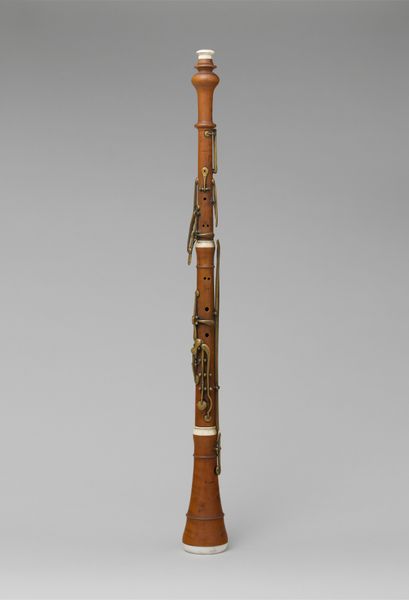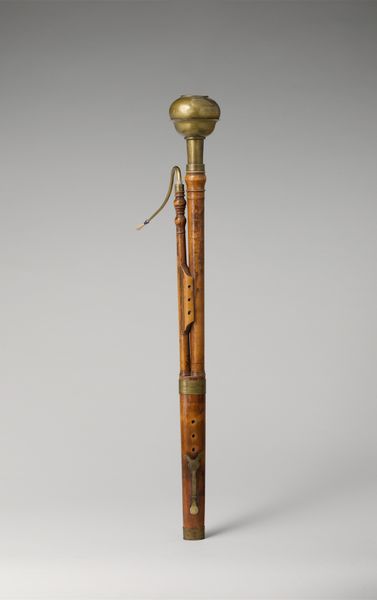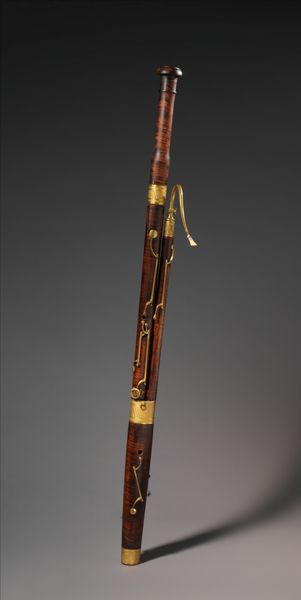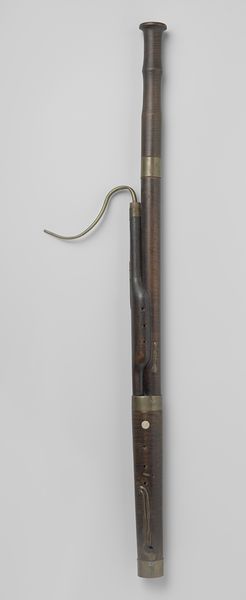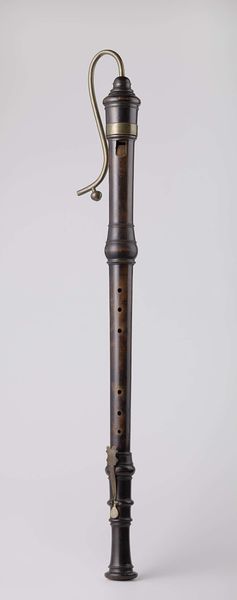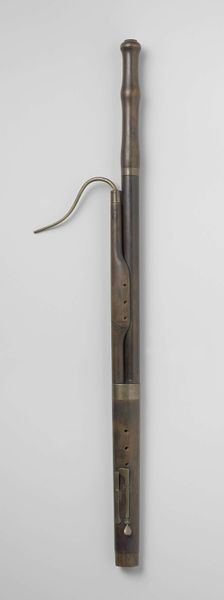
metal, wood
#
germany
#
baroque
#
metal
#
wood
#
musical-instrument
Dimensions: Length (bell to butt) 1265 mm, L. of tube with crook +/- 2400 mm, L. of tube without crook +/- 2185, Diameter of bell 57 mm. Length (including tenons) of: wing section: 551 mm (w/o crook) long section: 615 mm butt section: 413 mm bell section: 318 mm crook: +/-348 mm
Copyright: Public Domain
This is a bassoon in C, crafted by Johannes Scherer, Jr. in the late 17th or early 18th century. The first impression is one of elegant simplicity: warm, polished wood contrasted with aged brass fittings. The instrument’s form is elongated, vertical, and gently tapering. The eye is drawn to the play of lines—the parallel wooden tubes, the delicate curve of the crook, and the precisely placed sound holes. These elements create a visual rhythm, a kind of musical score in itself. The materiality speaks of craftsmanship, each part carefully shaped and fitted together. The brass, tarnished with age, adds a layer of history and use. Consider the cultural context. This bassoon embodies the values of the Baroque era: order, precision, and a refined aesthetic. It is a structure, a carefully engineered object designed to produce harmony. Yet, within this structure, there is room for expression, for the musician to create something new each time they play. It’s a reminder that even within rigid forms, art finds a way to resonate.
Comments
No comments
Be the first to comment and join the conversation on the ultimate creative platform.


